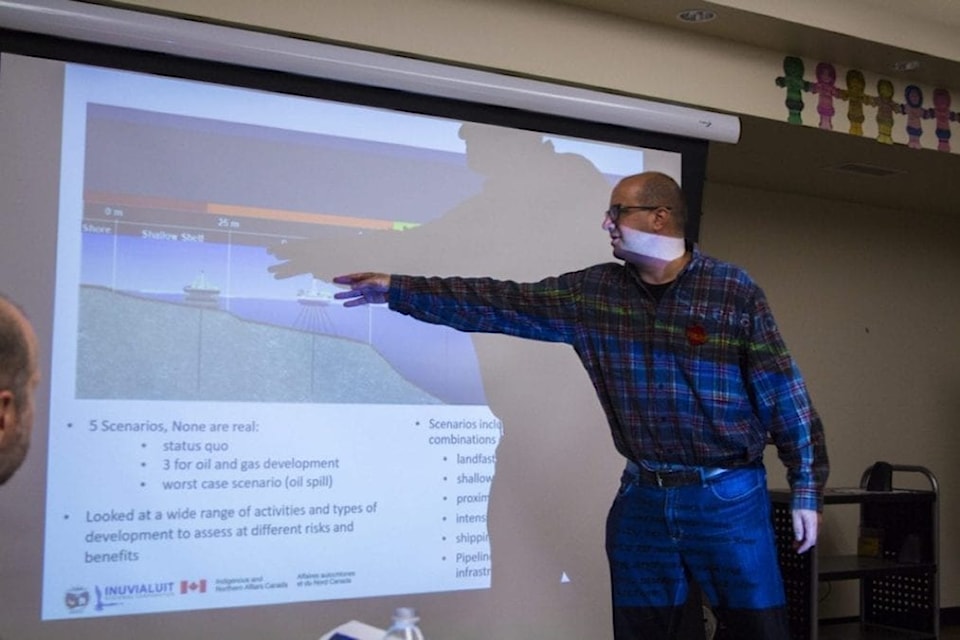A three-year assessment of the impacts of drilling for oil and gas near and off shore is nearly complete, with the Beaufort Regional Strategic Environmental Assessment to be finished March 31, 2020.
Researchers and government officials updated stakeholders and elders throughout the Mackenzie Delta and Beaufort Sea, starting Nov. 4 and wrapping up in Inuvik Nov. 8. The assessment is the third phase of a 16-year process that began in 2004.
Combining modern science and traditional knowledge of ecology, the strategy outlines a number of possibilities for economic development as well as worst-case scenarios for disasters and mitigation.
It will inform an upcoming 2021 review of the moratorium on exploration which was put in place by Prime Minister Justin Trudeau Dec. 20, 2016, halting over a billion dollars in leases in offshore drilling in the Beaufort Sea.
"You can't just drill for oil without knowing what the environment is," said director of government affairs and research Bob Simpson, who noted when policymakers first started looking into it they identified a number of gaps in the research. "In the past, people have been making decisions without looking at the science."
Complicating matters is the changing ecology from climate change, with less sea ice, warmer water, and invasive species already putting pressure on aquatic wildlife. Other problems anticipated are increased erosion along the coastline, more rain, stronger winds and increased the potential for more storms, with larger storm surges in tow.
Infrastructure inland will also be under pressure from melting permafrost affecting foundations and dryer conditions could spark wildfires.
Research manager Jennifer Parrott noted researchers needed more data on how climate change was affecting the western Arctic because the region was warming much faster than the Canadian average.
"Warmer environments don't necessarily mean hotter summers," she said. "Winters could be warmer. We're seeing a huge change in weather activity."
Part of the assessment is outlining five potential situations — a status quo where no drilling is permitted, where near-shore gas extraction is permitted as well as if near and off-shore oil exploration is permitted — along with the pros and cons of each to the environment, wildlife and people. The last example is a worst-case scenario, outlining possible ways oil could be spilled and how an emergency response could be deployed.
One point highlighted by the report demonstrated that less sea ice is increasing traffic in the Arctic. That means a number of pressures on the environment such as noise, garbage and grey water from ships and greater military and tourism activity are expected regardless of if drilling resumes in the Beaufort or not.
Simpson added even if the moratorium is lifted, market factors are still at work.
"One decision we don't have a lot of influence over is on industry," he said. "They could decide to sit on their leases depending on the price of oil and gas."
